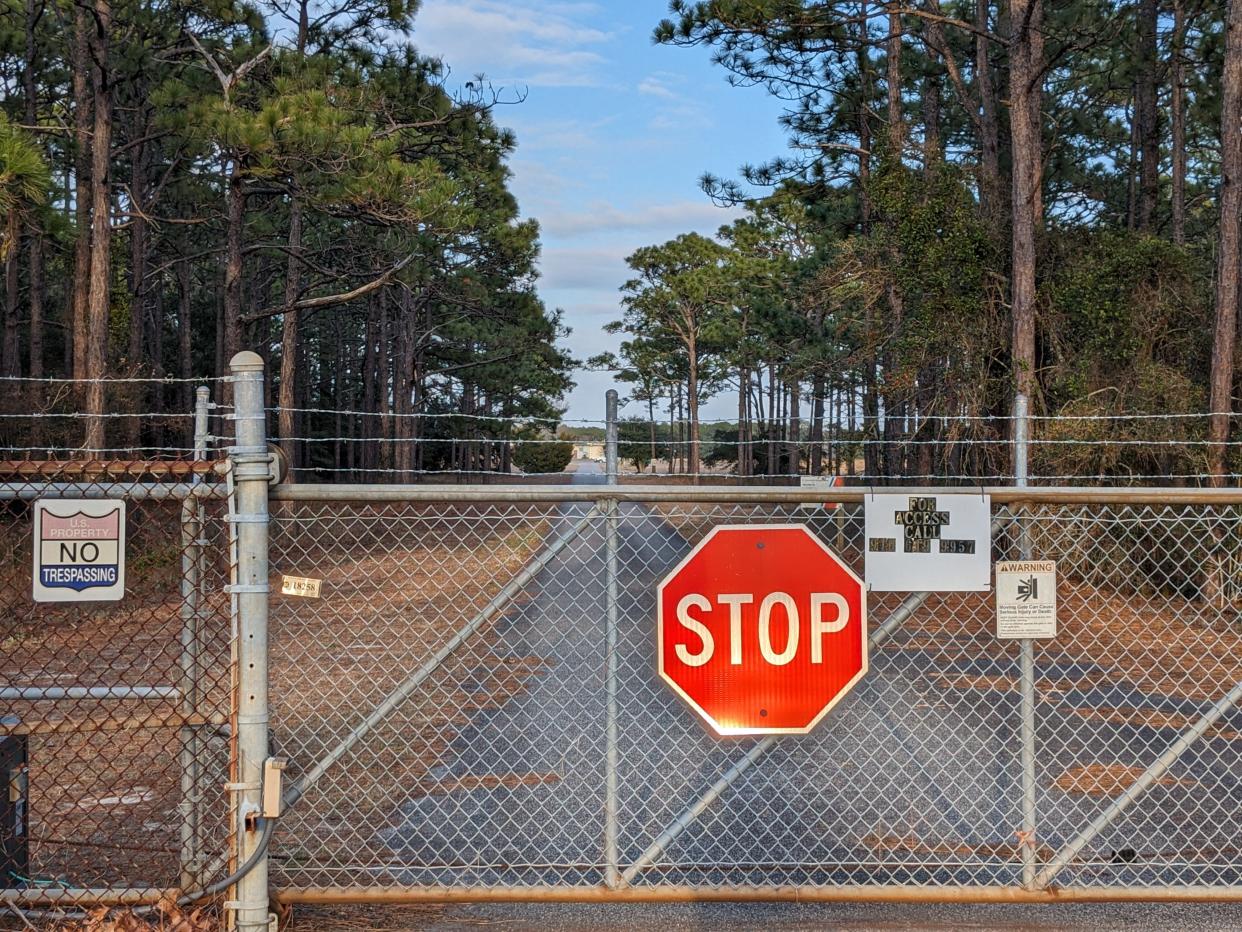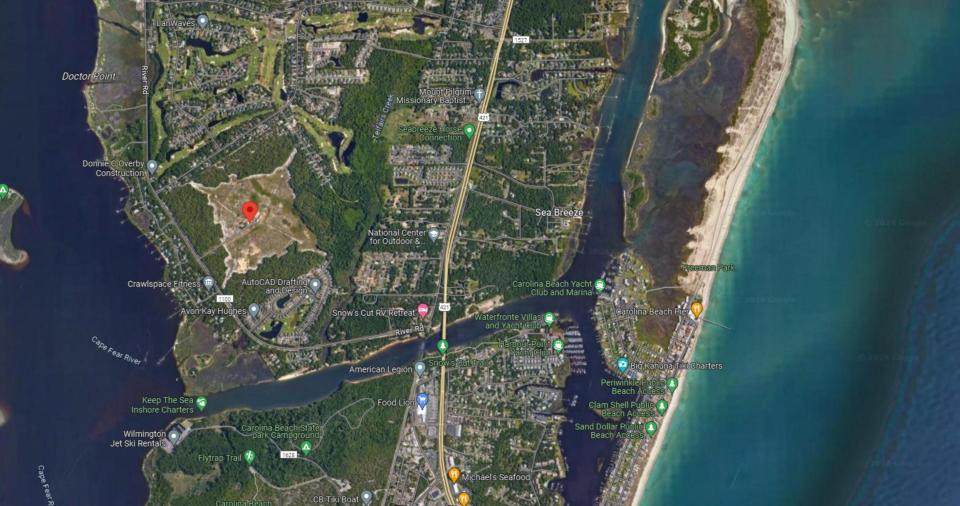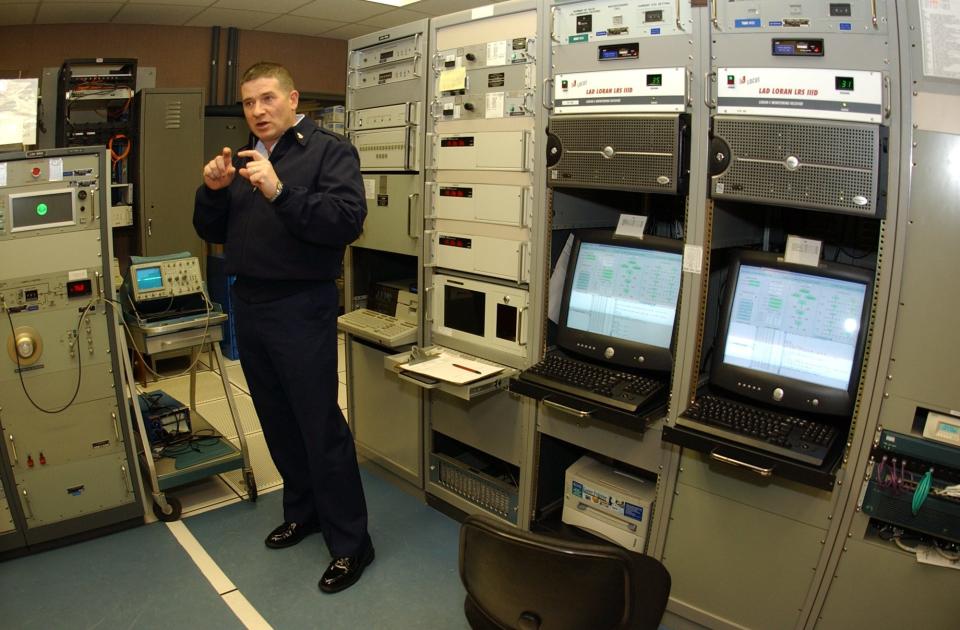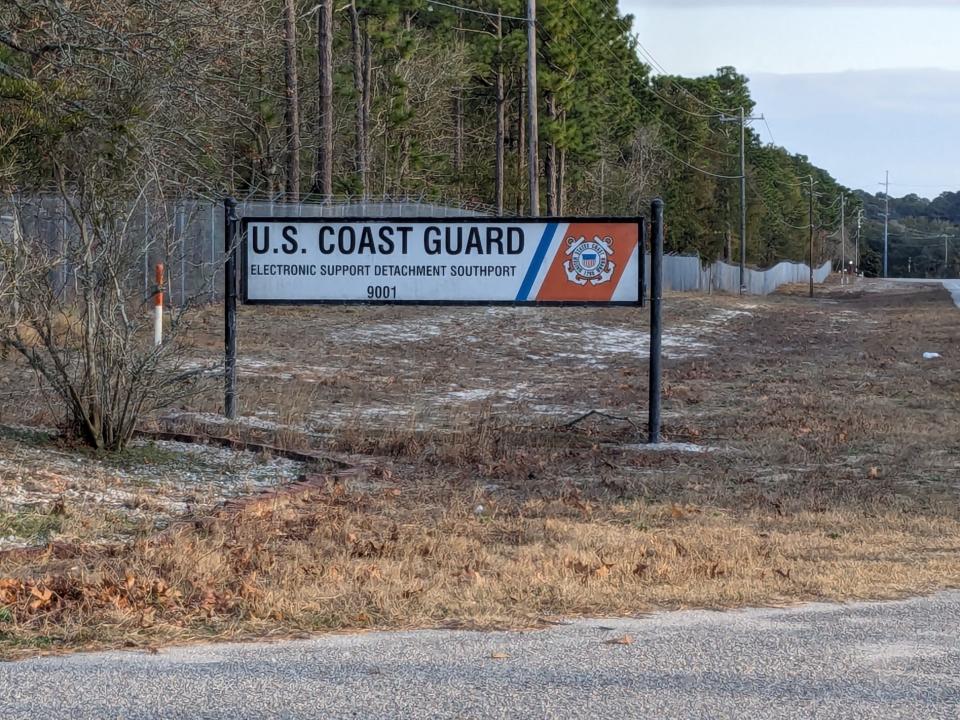What's the future of the Coast Guard's 210-acre LORAN station site near Carolina Beach?

The huge swathe of land might be the biggest piece of largely undeveloped land left in Southern New Hanover County.
The 210 acres also is smack in the middle of one of the fastest-growing counties in North Carolina that's part of the one of the fastest-growing metros in the country.
But it's relatively quiet, especially when it comes to radio transmissions, these days at the old Coast Guard LORAN (which stands for Long Range Aids to Navigation) property off River Road near Snow's Cut.
Long gone are the 625-foot-tall transmission towers that used to help ships navigate offshore. Also gone are many of the personnel who used to work at the facility, although a sign outside the sprawling parcel states that it is now home to the Electronic Support Detachment (ESD) Southport − not a LORAN station, as the sign said for most of its life.
So what's going on with the site, seemingly surplus to the Coast Guard's needs, that's been jealously eyed by local government officials and developers for decades?
Well, that's complicated. Here's why.

What was LORAN?
In a pre-GPS world, LORAN was a communication system used for decades to help ships navigate and know their locations.
The Coast Guard operated 49 Loran-C stations worldwide, including more than 20 in North America. Other countries, including most Western countries and Russia, also used LORAN. The system worked by comparing time differences between radio transmitters, which were set up in chains of three or more and separated by hundreds of miles. Each chain had one master transmitter and a series of secondary transmitters.
The stations would transmit powerful signals with precise timing information. LORAN receivers, mounted in boats and aircraft, would then compare the difference between the timing signals from the master and secondary transmitters and measure the difference. This would then pinpoint a navigator's location. The Carolina Beach LORAN Station was a secondary station operating in two chains, with one master station in Malone, Florida, and the other in Seneca, N.Y.
But with the advent of GPS, LORAN and its radio waves slowly began to fall out of favor, a bit like Morse code did when superior communication systems like cell phones and satellites became more common and affordable.

Could what's old be new again?
After years of threatening to do it, the Coast Guard eventually decommissioned its LORAN network in 2010.
While there had been talk of upgrading the LORAN-C network to E-LORAN, a digitalized and more automated version of LORAN, the cost of upgrading and rebuilding the system's infrastructure − and which agency should foot the bill − saw the idea shelved.
With the system turned off, the Coast Guard began retiring and disposing of the LORAN station sites.
But as tensions ramped up with Russia and China, some officials became concerned about the country's reliance on satellite-driven GPS as its primary, in some cases only, navigational system. Unpredictable weather patterns and systems churned up by climate change, and with forecasters predicting things to get worse in coming decades, also made having a secondary communication and navigational system seem like a smart idea.
Those concerns saw a renewed interest in keeping LORAN around as a backup, redundant navigational system. Advantages of LORAN over GPS include greater resistance to jamming, a non-reliance on satellites, and that the stations are easier to repair and defend than something orbiting hundreds of miles above the Earth.
That prompted Congress to pass bills about a decade ago that prevented the Coast Guard from selling its land without congressional approval and stopped the dismantling of any more LORAN stations.
In short, the fate of the stations became intertwined with questions over national security.

'No current plans'
But as with many things Congress does, legislators ordered the retention of the LORAN properties but didn't provide the Coast Guard with additional funding to upgrade or even maintain the existing communication infrastructure, which was in pretty bad shape after being mothballed years earlier.
Enter 2024.
The old LORAN station site today is home to a small unit, ESD Southport, that provides information technology and communications infrastructure support to Coast Guard units in the Wilmington area, said Lt. Carl Hendrickson, waterways management division chief with Coast Guard Sector North Carolina.
"There are no current plans for reactivating the LORAN station," he added.
And the future of the property?
Any sale of surplus federal property would be handled by the U.S. General Services Administration, the arm of the government that manages federal property. The local LORAN station wasn't listed as surplus or for sale on the agency's website.
GROWING PARK Wilmington is buying the Coast Guard's downtown riverfront property. Here's why
But what if ...
If the property became available, there would likely be no shortage of suitors.
Usually, local government agencies get first dibs at surplus federal property − like Wilmington did when it recently purchased the Coast Guard property downtown that used to be home to the Cutter Diligence.
In the past when it looked like the local LORAN station would become available, there was chatter about the large open parcel being transformed into athletic fields or a school site. A county park or even a storage site for everything from hurricane supplies as climate change makes tropical weather systems bigger and more powerful to surplus shipping containers from the Port of Wilmington. Carolina Beach officials even explored using part of the site to dump contaminated material dredged from the town's lake.
With flooding an ever-growing concern as relatively flat Southern New Hanover becomes increasingly developed, some environmentalists also suggested the site could be developed as a passive park that could double as a natural retention area for floodwaters during periods of heavy rains.
If a non-public use was investigated, the site could quickly be snapped up by developers for new homes or apartments in the fast-growing corner of the county. Such a move also would put the valuable piece of land back on the tax roll. According to county tax records, the parcel is currently zoned R-15, which is low residential density, and has an appraised tax value of $3.9 million − although any sale price would likely be much higher in today's red-hot property market.
Commissioner Jonathan Barfield Jr., who has served on the New Hanover County board for 15 years, said he hadn't heard any recent talk about the Coast Guard property hitting the market.
But if it did, he said he wouldn't mind seeing the property remain as greenspace in one form or another.
"People are always wanting more greenspace, so if we have chance to add some to the public sphere that would be great," Barfield said.
And if the land went private, he said single-family homes would probably be the best type of development there to mesh with the neighboring community.
"Not apartments," he added. "Certainly not apartments."
Reporter Gareth McGrath can be reached at GMcGrath@Gannett.com or @GarethMcGrathSN on X/Twitter. This story was produced with financial support from the Green South Foundation and the Prentice Foundation. The USA TODAY Network maintains full editorial control of the work.
This article originally appeared on Wilmington StarNews: What's up with the Coast Guard's LORAN station near Carolina Beach?

